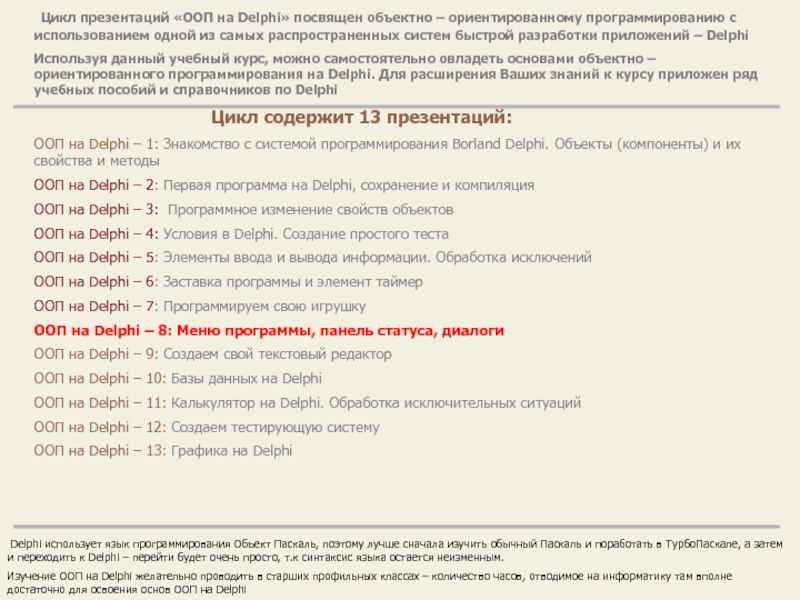- Главная
- Разное
- Дизайн
- Бизнес и предпринимательство
- Аналитика
- Образование
- Развлечения
- Красота и здоровье
- Финансы
- Государство
- Путешествия
- Спорт
- Недвижимость
- Армия
- Графика
- Культурология
- Еда и кулинария
- Лингвистика
- Английский язык
- Астрономия
- Алгебра
- Биология
- География
- Детские презентации
- Информатика
- История
- Литература
- Маркетинг
- Математика
- Медицина
- Менеджмент
- Музыка
- МХК
- Немецкий язык
- ОБЖ
- Обществознание
- Окружающий мир
- Педагогика
- Русский язык
- Технология
- Физика
- Философия
- Химия
- Шаблоны, картинки для презентаций
- Экология
- Экономика
- Юриспруденция
Test design techniques презентация
Содержание
- 1. Test design techniques
- 2. Test design – the process
- 3. Test design techniques: Equivalence Partitioning Boundary Value
- 4. Equivalence Partitioning Equivalence Partitioning (EP, also, called
- 5. Equivalence Partitioning Example: You have a range
- 6. Boundary Value Analysis Boundary Value Analysis (BVA)
- 7. Boundary Value Analysis Example: If we take
- 8. Cause/Effect Cause Effect( or Cause Effect Graph
- 9. Error Guessing Error guessing is a testing
- 10. Decision Tables Decision tables are a precise
- 11. Decision Tables
- 12. State Transition State Transition testing is defined
- 13. State Transition Example: You have a flight
Слайд 2 Test design –
the process of transforming general testing objectives
Слайд 3Test design techniques:
Equivalence Partitioning
Boundary Value Analysis
Cause/Effect
Error Guessing
Decision tables
State transition
Слайд 4Equivalence Partitioning
Equivalence Partitioning (EP, also, called Equivalence Class Partitioning) is a
EP can reasonably reduce the number of your test cases. It can be used at all levels of testing – unit, integration and system test levels.
Слайд 5Equivalence Partitioning
Example:
You have a range of admissible values from 0 to
Слайд 6Boundary Value Analysis
Boundary Value Analysis (BVA) is the process of testing
Analysis Boundary Values can be applied to fields, records, files, or to any kind of entities with constraints.
Слайд 7Boundary Value Analysis
Example:
If we take the example above (from EP), as
Слайд 8Cause/Effect
Cause Effect( or Cause Effect Graph ) is a black box
Example of the solution of problem for a triangle:
Couse 1: Side “x” is less than sum of “y” and “z”
Effect 1: Not a triangle
Couse 2: Side “x” is equal to side “y”
Effect 2: Equilateral triangle
Cause 3: Side “z” is less then sum of “x” and “y”
Effect 3: Isosceles triangle.
Слайд 9Error Guessing
Error guessing is a testing technique that makes use of
Example:
Divide by zero
Entering blank spaces in the text fields
Pressing submit button without entering values.
Uploading files exceeding maximum limits.
Слайд 10Decision Tables
Decision tables are a precise yet compact way to model
Example: Printer troubleshooter
Слайд 12State Transition
State Transition testing is defined as the testing technique in
State Transition Testing Technique is helpful where you need to test different system transitions. State transition testing – is a black box test design technique in which test cases are designed to execute valid and invalid state transitions [ISTQB]


















